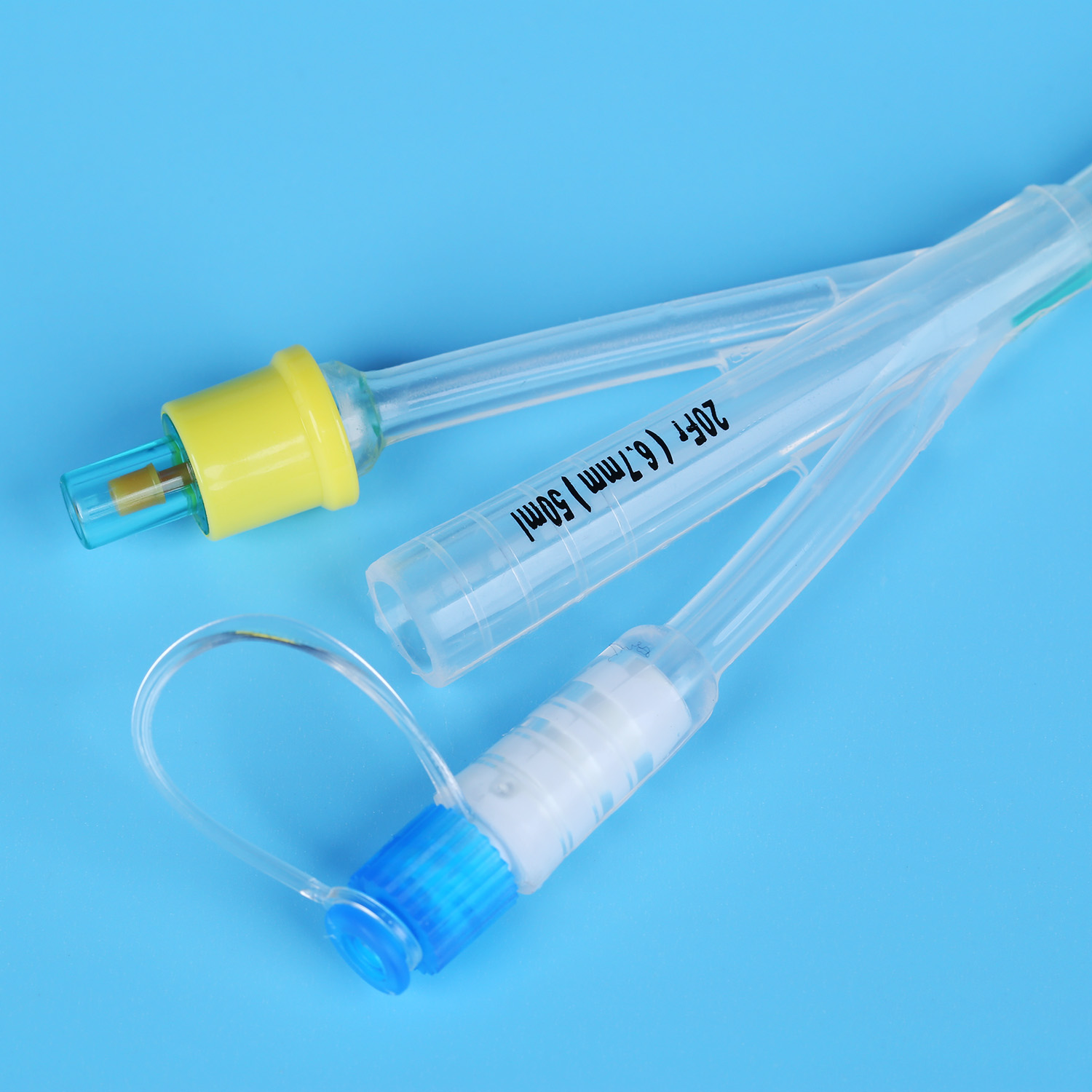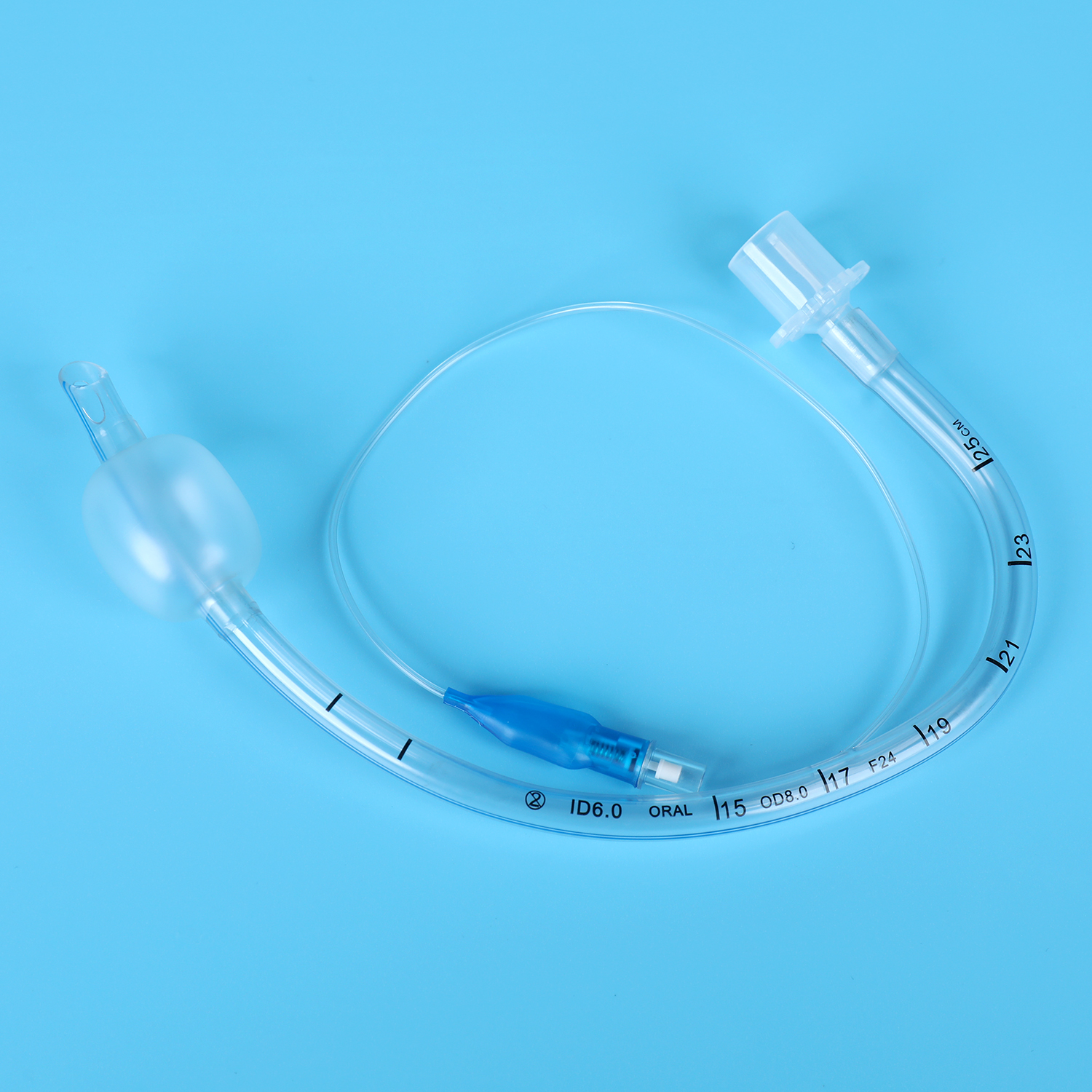Reinforced Armored Endotracheal Tube Magill Curve China
Product Benefits
1. A bevelled tip will pass much easier through the vocal chords than a tube with a cross-cut distal opening.
2. The bevel is left-facing rather than right-facing to allow a better view of the ETT tip entering the field of view from right to left/ midline and then passing throught the vocal chords.
3. The Murphy eye provides an alternate gas passage way
4. A standard 15mm connector allows attachment of a variety of breathing systems and anesthetic circuits.
5. A radio-opaque line is helpful to confirm an adequate tube position on a chest X-ray
6. The Magill curve makes tube insertion easier as the curve follows the anatomy of the upper airway.
7. Designed for smaller airways
8. More flexible than standard ET tubes, less likely to kink and occlude when bent to an angle, which is their biggest single advantage over standard ETTs.
9. Advantageous in fiberoptic intubation via either the oral or nasal route. Since they are usually easier to ‘railroad’ off the scope due to their superior flexibility.
10. Can be useful in patients positioned prone .
What is an endotracheal tube?
An endotracheal tube is a flexible tube that is placed through the mouth into the trachea (windpipe) to help a patient breathe. The endotracheal tube is then connected to a ventilator, which delivers oxygen to the lungs. The process of inserting the tube is called endotracheal intubation . Endotracheal tubes are still considered the ‘gold standard’ devices for securing and protecting the airway.
What’s the purpose of an endotracheal tube?
There are many reasons why an endotracheal tube may be placed, including surgery with a general anesthetic, trauma, or serious illness. An endotracheal tube is placed when a patient is unable to breathe on their own, when it is necessary to sedate and “rest” someone who is very ill, or to protect the airway. The tube maintains the airway so that air can pass into and out of the lungs.
What is a reinforced endotracheal tube?
Wire-reinforced or armored ETTs incorporate a series of concentric steel wire rings embedded in the wall of the tube along its entire length. These are designed to make the tube flexible and resist kinking with positioning. They are promoted for use in head and neck surgery, where surgical positioning may require bending and movement of the ETT. They are also useful for intubating through a mature tracheostomy stoma or a surgically divided airway (as in tracheal reconstruction), where the flexibility of the tube allows less interference with the surgical field. Although kink-resistant, these tubes are not kink- or obstruction-proof. Unfortunately, if the tube is crimped or kinked, it cannot return to its normal shape and must be changed.
Sizes ID mm
2.0-10.0
Packing Details
1 pc per blister bag
10 pcs per box
200 pcs per carton
Carton size: 61*36*46 cm
Certifciates:
CE certificate
ISO 13485
FDA
Payment Terms:
T/T
L/C
17.jpg)
10.jpg)

 中文
中文


1.jpg)

